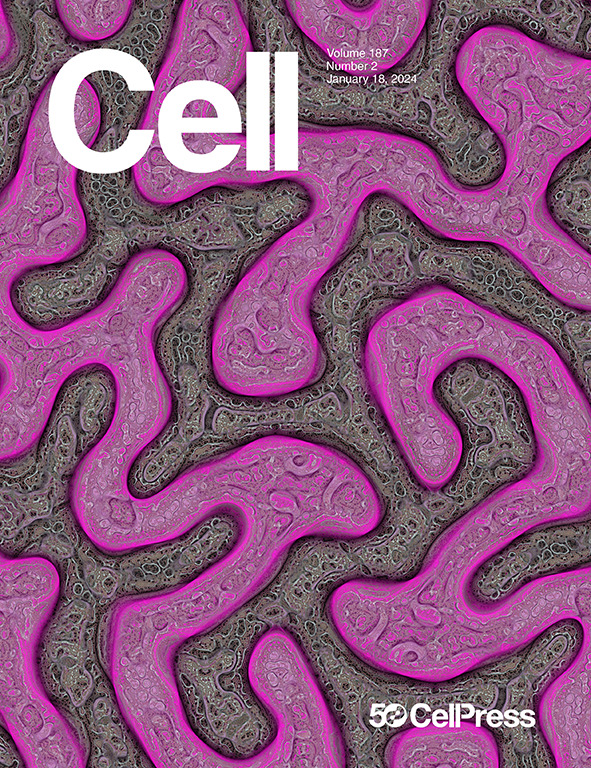一种侵袭性真菌病原体的表型景观揭示了其独特的生物学特性
IF 42.5
1区 生物学
Q1 BIOCHEMISTRY & MOLECULAR BIOLOGY
引用次数: 0
摘要
新型隐球菌是真菌性脑膜炎最常见的病因,也是世卫组织最优先考虑的真菌病原体。除了与模式真菌有远亲关系外,C. neoformans也是一个强大的实验系统,用于探索从专业模式酵母谱系中丢失的保守真核机制。为了在全球范围内破译其生物学,我们构建了4328个基因缺失,并在141种不同生长限制的体外条件下和小鼠感染期间以极高的精度测量了每个突变的适应度。我们通过基于表型特征的基因聚类来定义功能模块。深入研究以两种方式利用这些数据。首先,我们定义并研究了关键信号通路的新成分,揭示了模型酵母中不存在的后生动物样细胞机制。其次,我们确定了环境适应机制,以提高C.新生生物的哺乳动物毒力,缺乏已知的动物宿主。我们的工作为破译致命的人类病原体提供了前所未有的资源。本文章由计算机程序翻译,如有差异,请以英文原文为准。

Phenotypic landscape of an invasive fungal pathogen reveals its unique biology
Cryptococcus neoformans is the most common cause of fungal meningitis and the top-ranking WHO fungal priority pathogen. Only distantly related to model fungi, C. neoformans is also a powerful experimental system for exploring conserved eukaryotic mechanisms lost from specialist model yeast lineages. To decipher its biology globally, we constructed 4,328 gene deletions and measured—with exceptional precision—the fitness of each mutant under 141 diverse growth-limiting in vitro conditions and during murine infection. We defined functional modules by clustering genes based on their phenotypic signatures. In-depth studies leveraged these data in two ways. First, we defined and investigated new components of key signaling pathways, which revealed metazoan-like cellular machinery not present in model yeasts. Second, we identified environmental adaptation mechanisms repurposed to promote mammalian virulence by C. neoformans, which lacks a known animal reservoir. Our work provides an unprecedented resource for deciphering a deadly human pathogen.
求助全文
通过发布文献求助,成功后即可免费获取论文全文。
去求助
来源期刊

Cell
生物-生化与分子生物学
CiteScore
110.00
自引率
0.80%
发文量
396
审稿时长
2 months
期刊介绍:
Cells is an international, peer-reviewed, open access journal that focuses on cell biology, molecular biology, and biophysics. It is affiliated with several societies, including the Spanish Society for Biochemistry and Molecular Biology (SEBBM), Nordic Autophagy Society (NAS), Spanish Society of Hematology and Hemotherapy (SEHH), and Society for Regenerative Medicine (Russian Federation) (RPO).
The journal publishes research findings of significant importance in various areas of experimental biology, such as cell biology, molecular biology, neuroscience, immunology, virology, microbiology, cancer, human genetics, systems biology, signaling, and disease mechanisms and therapeutics. The primary criterion for considering papers is whether the results contribute to significant conceptual advances or raise thought-provoking questions and hypotheses related to interesting and important biological inquiries.
In addition to primary research articles presented in four formats, Cells also features review and opinion articles in its "leading edge" section, discussing recent research advancements and topics of interest to its wide readership.
 求助内容:
求助内容: 应助结果提醒方式:
应助结果提醒方式:


